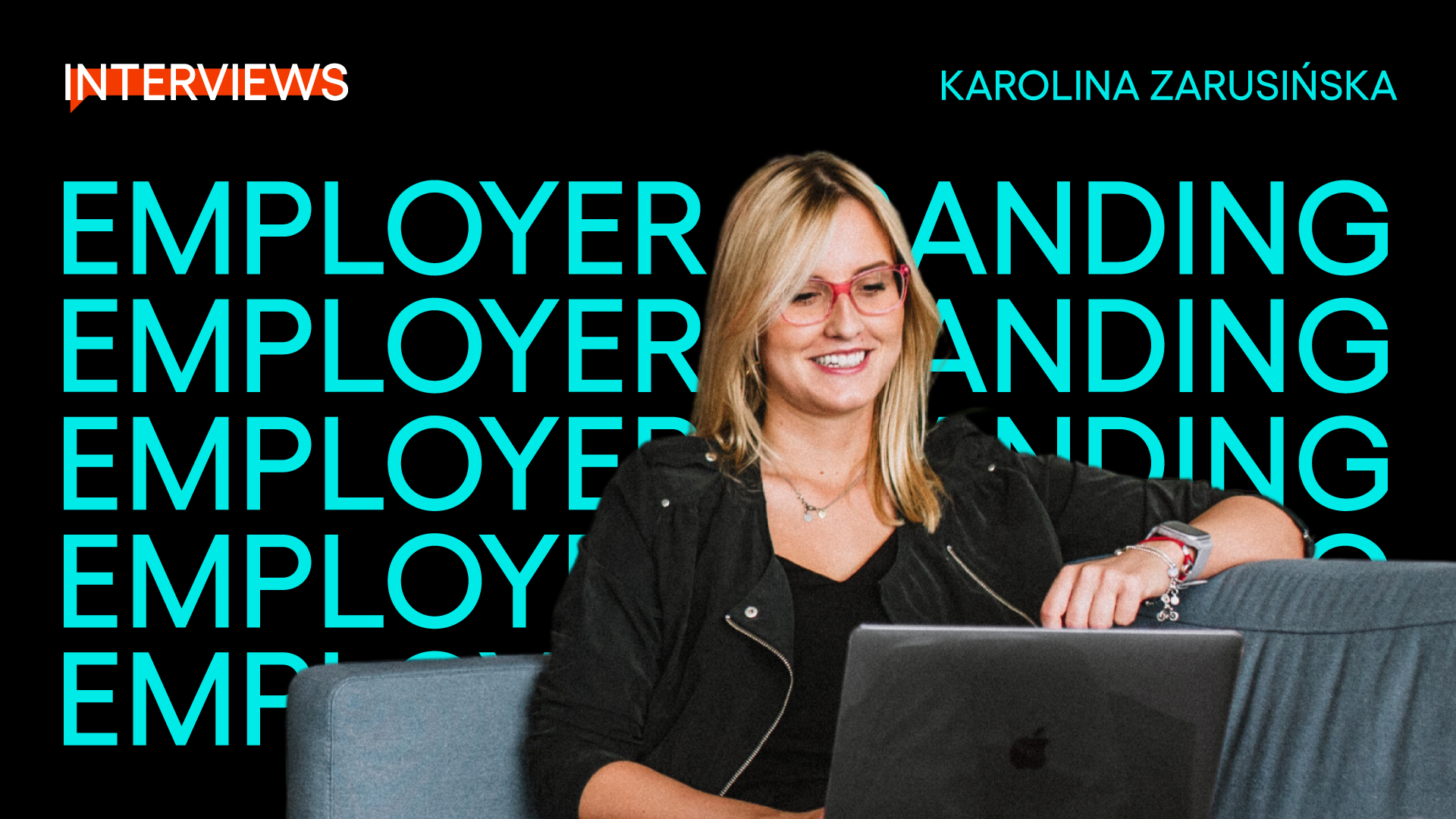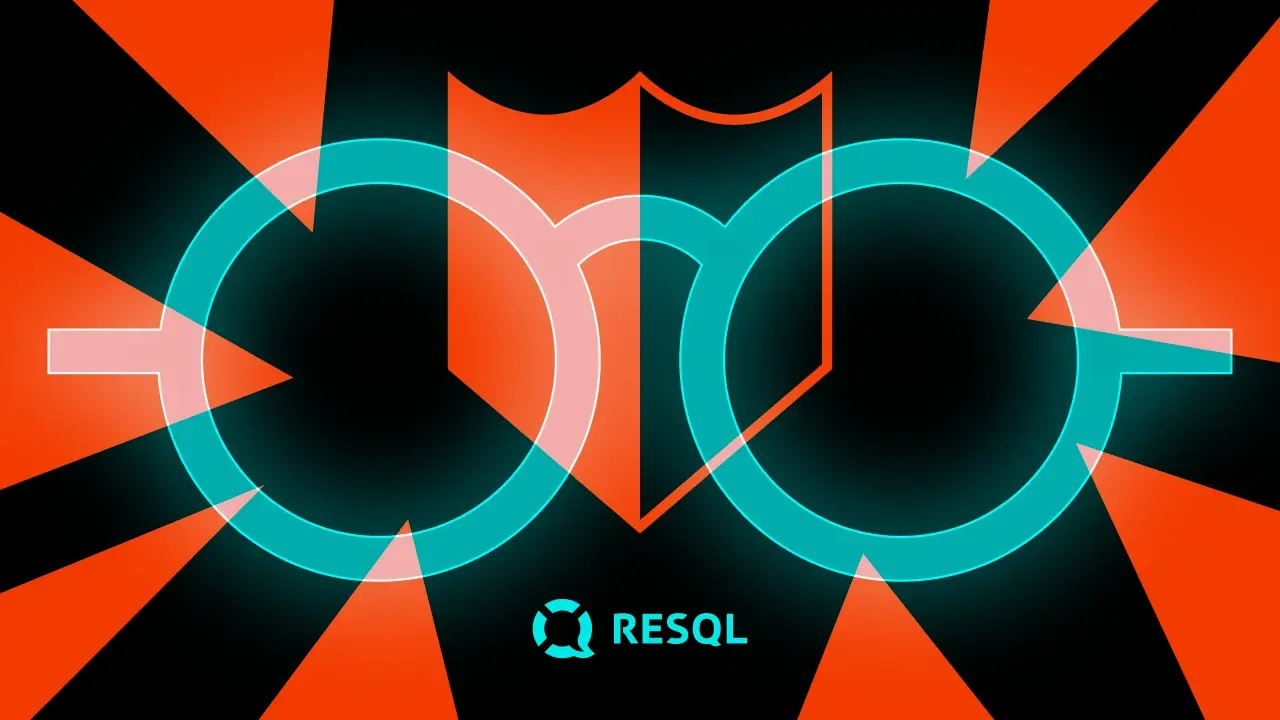#TeamSpeednet: Karolina, Head of Employer Branding


My next interviewee is Karolina – Head of Employer Branding. Karolina has been on board with us for over seven years. In a short interview, she shared her story of working at Speednet. We also talked about the daily work of a leader and professional burnout.
Hi Karolina, it’s great that you have found a moment to talk! Let’s start with a standard question. What do you do at Speednet?
As the Head of Employer Branding, I am mainly focused on leading a talented employer branding team. Employer Branding is a relatively new area of specialisation, so it only brings clear associations to some. Daily, we carry out tasks in the area of recruitment marketing and communication. We take care of our image in social media, implement recruitment campaigns, organise events, charity initiatives, and support hobby groups. We also take care of internal communication – in addition to daily announcements, we run a monthly and quarterly newsletter and develop a company platform with a knowledge and information database. It is also our responsibility to implement a periodic job satisfaction survey, which helps us better respond to our employees’ needs. In addition, we support other departments with communications and the preparation of marketing materials.
Can you tell me how many years you’ve been on board and how your role in the company has changed?
I’ve recently celebrated a lucky seventh! I admit that this wasn’t the plan. It was supposed to be a six-month job, which I was combining with my full-time studies. I didn’t have many expectations. You know how it is, as a student, I just wanted to catch on something ‘more serious’. At that time, I worked as a waitress, gave a math tutor and played online games for a living. In my final years at university, I saw myself as an analyst and applied for a target job in this area. I participated in several multi-stage recruitments that lasted almost five months (psychological tests, paper-and-pencil assignments, and interviews arranged per manager). Eventually, I even got my “dream” offer, but after three months at Speednet, I had a good feeling that I had hit my stride for the long term – so I declined.
To answer the second part of the question. When I started work, we employed about 65 people, most of them in technical positions. Out of this number, we had “three and a half” people in the so-called “support department”. Marzena was responsible for office and accounting, Gosia for recruitment, Michal for sales, and me, for that moment, a team padawan [laughs]. At the beginning I got the task of sorting out the project portfolio and staff competence profiles. This task was a great start – I had to talk with all our specialists requesting information, which automatically allowed me to get to know them. I completed the task ahead of schedule and started to get bored. From the question “maybe you need help with something” to the more adventurous “hey give me something to do”, during the first four years of my work, I carried out tasks in the areas of recruitment, sales, marketing, communication or office service. With a strong emphasis on the HR and recruitment area because shortly after being hired I replaced Gosia during her maternity leave.
After two years, we were about to print business cards, and I was wondering what to write next to my name. Asking for advice, the CEO suggested: Hmm… How about Fullstack Multitasker [laughs].
There has been a lot of hype recently about job burnout and, especially among the younger generations, the tendency to change jobs frequently. Have you ever had such a moment of hesitation?
During my first years on board, I worked in the mode of: “I’m a working woman. I’m not afraid of any job”, quoting a Polish cult classic [laughs]. As I’ve already mentioned, I was dealing with tasks from different departments. It was a very valuable experience. Naturally, it allowed me to take a direction of specialisation that I feel good about. I found that I started avoiding tasks in accounting or office services. I took a neutral approach to sales tasks, while HR/EB, communication or marketing tasks were often found by myself, submitted for approval and then implemented.
To cut to the chase, yes, I did have moments of doubt, but I wasn’t afraid to discuss them. I remember at least two such situations. The first burnout was prompted by mild frustration. The small tasks in running the office didn’t allow me to organise my working time effectively and consequently. Thus, I ended up cutting corners with some tasks. After a brief conversation, the solution came quickly – we hired an additional person for the Office Assistant position. The second hesitation was related to the fact that more experience convinced me that nothing at work challenged me professionally. This situation coincided with a time of organisational change in the company. I was then offered the opportunity to build a department responsible for Employer Branding and Communications. I took this as a challenge and caught the wind in my sails.
I’m bringing it up here thinking of the people who are just looking for their career path. I’m also referring to a recent interview where you spoke with Daniel. Daniel started as an Analyst, jumped to an HR role and is now trying his hand as a Delivery Manager. If you’re comfortable with a company but don’t feel your role – talk to your manager. The other side – your employer – can’t read your mind, and a frank discussion is usually the best solution. Instead of changing jobs, you can look for opportunities within your current company.
Becoming a team leader is a significant change. How has the change in role and promotion to a new position translated into your daily work?
We decided to implement the structure and clarify the responsibilities for the various departments at the end of 2021. We employed around 180 people at the time. The organisational changes coincided with a rebranding and a move to a new office. It was the most intense period at Speednet. For me, it was a leap from a one-person band to working in two teams. The first team is a team of head ‘dinosaurs’ – I say dinosaurs because in this team the average seniority in the company is… 9 years! There are six of us, and we know each other like the back of our hand, but we didn’t work closely together before, so we’ve had to learn to work together. We work with the board to improve the company’s organisation, processes, and strategy, developing budgets and operational plans. The second team is the EB team, which I’ve built from scratch. It took me a while to introduce new people, teach them the ropes and give them ‘tribal knowledge’. After a year and a half, it’s safe to say, we make a perfect match.
And is there anything that has changed in your day-to-day work that is not necessarily positive?
I’ve always assumed that the role of a team leader, manager or head is not just about delegating tasks. Such stereotypes and patches often stick for a reason. In many cases, that’s how it is.
In my daily work, a lot has remained the same. I still carry out operational tasks. I sometimes jump in as a replacement during holidays, edit content and materials, prepare posts for social media or decorate spaces for events. Once a quarter, I also prepare a major publication on behalf of the head team. At Speednet, we put a strong emphasis on transparency. In these hybrid-remote times we want to have our ear to the ground to keep everyone (in our team) posted on what’s going on in all departments, what we’ve been working on and what we have planned.
The proverbial 9 to 5 work is not made of elastic, so naturally,I’ve had to delegate some tasks. This doesn’t always come easy, especially those tasks you enjoy doing. In the team, we put a lot of emphasis on teamwork. We bounce ideas off each other, we consult each other, and if a task poses a problem to someone, we try to work together to find a solution.
Speaking of the duties I’ve handed over. I sometimes miss conducting recruitment interviews and onboarding – it’s an excellent opportunity to meet new people. It is for our employees that we improve communication and organise various initiatives. So, it’s worth getting to know ‘our customers’ in person [laughs].
Last question, what do you think sets Speednet apart from other companies?
I could easily say here without a feeling that I am selling a pig in a poke… People, atmosphere, company culture, office, benefits. However, if I were to choose one particular differentiator, I would put it on the ‘corporate heart’ [laughs].
Speednet has been involved in charity and helping those in need for years. We regularly support foundations, collections and organisations. Every year, we have been bidding at the WOŚP auctions – either for our employees or intending to pass the auctioned item or activity on, to an orphanage.
However, we do not operate a standard model based only on transfers from the company account. In 2017, we set up the institution of a ‘charity piggy bank’. The idea was that the piggy bank would work like a classic fundraising box – whoever wanted to contribute something, simply throws in and we transfer the amount raised to the chosen charity organisation. What can I say – it has by far exceeded our expectations [laughs]. It’s been a time since the collection counter totalled over a six-figure sum. How do we do it? There are many examples. Sometimes, on a company channel like ‘OLX’, we put up something for a charitable donation or fire up our piggy bank for in small challenge during company events. It’s great that our employees are happy to make a contribution and remember such values.




